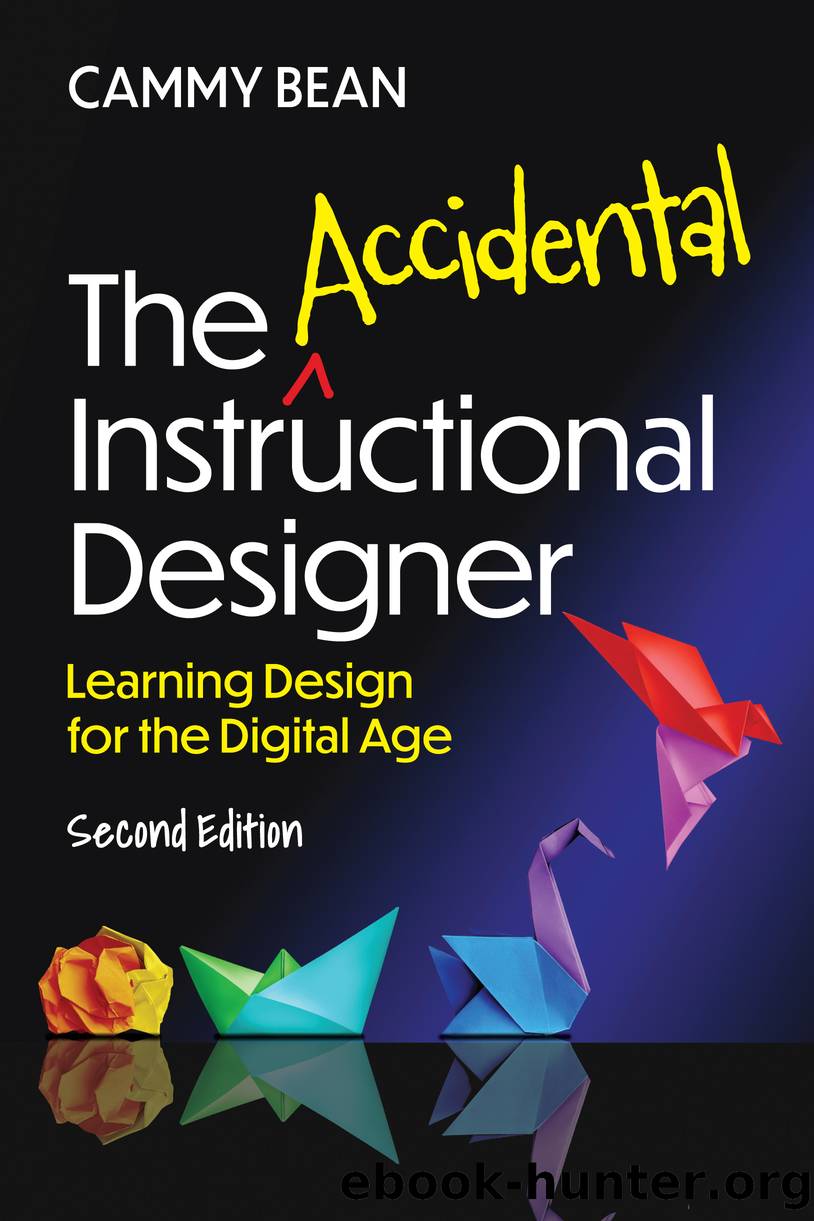The Accidental Instructional Designer by Cammy Bean

Author:Cammy Bean [Bean, Cammy]
Language: eng
Format: epub
ISBN: 9781957157016
Publisher: Association for Talent Development
Published: 2020-10-15T00:00:00+00:00
Is It too Good to Be True?
One of the downsides to all the technology-based training that has been happening for the past 25 years (at least), is that itâs really dumbed down the approach that many people take to training.
It seems a bit too good to be true to think that we can effectively facilitate deep learning in an easy-to-produce, 30-minute e-learning course, and create sustained behavior change. Thatâs because it is too good to be true. And yet thatâs the mindset a lot of organizationsâand those within themâseem to have: âJust create an e-learning program!â
This may sound counterintuitive coming from someone who has buttered her bread by creating a lot of self-paced courses. However, by keeping aligned to learning science and the evidence for what works, advanced practitioners increasingly have embraced learning as a journey and not an event. We aim to focus on activities not courses, while finding ways to space out and prolong the learning process to ensure better retention and on-the-job application of the knowledge and skills gained.
Perhaps youâve built in diagnostic tools that allow the learner to test out of material theyâve already mastered and thus created a more personalized learning experience aligned to their real needs. Then you follow up your e-learning session with classroom and immersive sessions that let participants practice and role play with live instructor feedback. You assign students to cohort groups for a meaningful blended experience. As they move through the program, you have them reconnect with their cohortsâeither live or virtuallyâto share their experiences and provide peer-to-peer feedback. If you do it right, this blend creates a coherent learner journey, with the understanding that the process takes time and requires effective practice, opportunity for integration and reflection, and valuable feedback cycles from both mentors and peers. In this type of model, short learning experiences and activitiesâsometimes referred to as microlearningâcan play a key part of the larger learning experience.
Hereâs the bottom line: Self-paced e-learning can be one really excellent ingredient in the mix. But instructional designers and those who care about performance would do well to expand that ingredient list. So unless you want to be limited in the role of an instructional developerâa role in which you only develop assets, probably in a few key toolsâversus becoming an instructional designer/learning experience designer/learning architect/<Insert Your Favorite Variation On This Theme And How You Identify here>, it pays to become a learning mixologist.
Download
This site does not store any files on its server. We only index and link to content provided by other sites. Please contact the content providers to delete copyright contents if any and email us, we'll remove relevant links or contents immediately.
Hit Refresh by Satya Nadella(9039)
The Compound Effect by Darren Hardy(8809)
Change Your Questions, Change Your Life by Marilee Adams(7635)
Nudge - Improving Decisions about Health, Wealth, and Happiness by Thaler Sunstein(7615)
The Black Swan by Nassim Nicholas Taleb(7010)
Deep Work by Cal Newport(6880)
Daring Greatly by Brene Brown(6447)
Rich Dad Poor Dad by Robert T. Kiyosaki(6403)
Principles: Life and Work by Ray Dalio(6215)
Playing to Win_ How Strategy Really Works by A.G. Lafley & Roger L. Martin(5924)
Man-made Catastrophes and Risk Information Concealment by Dmitry Chernov & Didier Sornette(5921)
Digital Minimalism by Cal Newport;(5664)
Big Magic: Creative Living Beyond Fear by Elizabeth Gilbert(5614)
The Myth of the Strong Leader by Archie Brown(5425)
The Slight Edge by Jeff Olson(5346)
Discipline Equals Freedom by Jocko Willink(5285)
The Motivation Myth by Jeff Haden(5156)
Stone's Rules by Roger Stone(5026)
The Laws of Human Nature by Robert Greene(4999)
